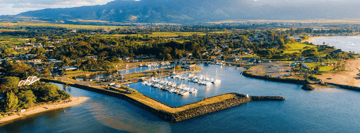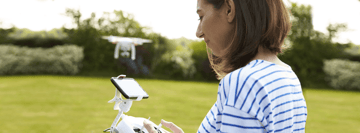For most drone pilots, the incoming winter means shorter days, lower temperatures and tricky flying conditions. For many that’s enough to justify packing up the gear and waiting until the new year comes around to get back in the air.
We see winter months as an opportunity to capture sights and scenes that wouldn’t be possible without a touch of snow or the low light of November, December and January.
That’s because as long as you can avoid the rain and snow - while it’s falling, at least - winter is a great time of year to fly, with endless creative potential for aerial photographers.
Here are a few things to consider if you’re planning to fly over the next few months.
Spend more time on flight planning
Even if you’re lucky enough to live in a place that offers sunshine all year-round, the winter months will bring shorter days and very different light conditions.
The sun sits lower in the sky; its light is softer, warmer and more dramatic - particularly if you’re out during the golden hour.
All of that means it’s more important than usual to plan your flights ahead of time. There are plenty of apps you can use to check the weather conditions, see when it’s best to fly and even estimate how the sun will be illuminating your chosen scene. You can find more detail about those here.
Aside from the weather having a mind of its own during the winter months, proper flight planning is also important because of the impact lower temperatures can have on your gear.
Make adjustments for shorter flight times
One of the biggest things you’ll notice is that your flight times are reduced when it’s cold out. The efficiency of drone batteries dips significantly if you’re operating below 32°F, for example.
So what can you do? Well, the most obvious solution is to take more batteries with you and to take external chargers to top them up while you’re on the go.
But it’s also worth taking the time to plan your flights in more detail. In the summer you can afford to fly around in search of inspiration and use up battery life as you explore the environment and your options from above.
But in the winter it’s best to have a clear idea of what the aim of the shoot is before you take off. Planning ahead will mean you have more time in the air and, just as important, less time spent standing around in the cold!
Which brings us to...
Gloves
You don’t need us to tell you that gloves are a good idea in the winter. But they are especially important when being able to feel your fingers is the only difference between a beautiful, snowy panorama and your drone flying straight into a tree.
You get the idea: numb fingers are a drone pilot’s worth enemy.
Handling the controls is easy enough with gloves on, but it can be tough to operate your camera settings and other options within whichever app you’re using if you’re fingers are covered up.
So consider getting some screen-friendly gloves. They’re usually thin - and not the warmest - but they offer a good balance between keeping your fingers from freezing and having full control over what you’re doing.
Also, think about mapping your controller’s button functions to ensure you use phone or tablet screen as little as possible.
ND filters and in-flight tips
One of the common mistakes photographers make during the winter is not appreciating how the brightness of snow can spoil shots. Winter wonderland scenes can be tricky to capture and do justice to.
The best way to capture snow-white scenes without overexposure is to pack Neutral Density filters. These reduce the amount of light the lens is exposed to and give you more flexibility over your camera settings. In snowy conditions, cameras tend to automatically underexpose shots in a way that makes snow look more grey than white. Nobody wants that.
The solution is to bump up the exposure. An ND filter will allow you to do that without totally overexposing your shots.
It’s also a great idea to make sure your histogram is visible when flying. Even if you’re using a super detailed monitor like DJI’s CrystalSky, reading the exposure of a scene correctly can be tough through a screen. That’s where your histogram will come in handy. Think of it as an early-warning system: you should be able to tell with one glance whether your image is going to be overexposed.
Another issue drone pilots face in winter is that snow comes out looking a little too blue and frosty. This is down to white balance, which isn’t something you’d expect to worry about when most of the scene is white.
There are two ways around this. You can shoot in RAW and manually edit your photos and videos in post-processing. Or, you can adjust your white balance according to the conditions, making sure you bring out the whites of your winter scene and get the color temperature on point. It’ll take some practice, but option two is definitely your best bet.
There’s no reason you should be grounded during the colder months ahead. Check out our post on the three surprising benefits of flying during winter.





